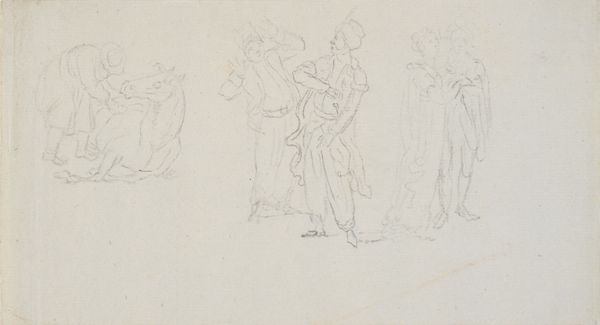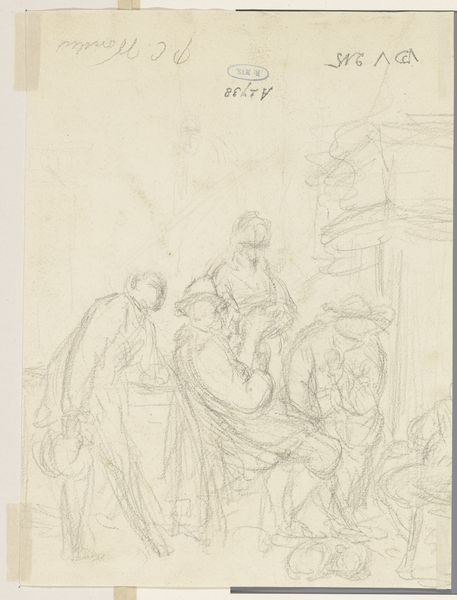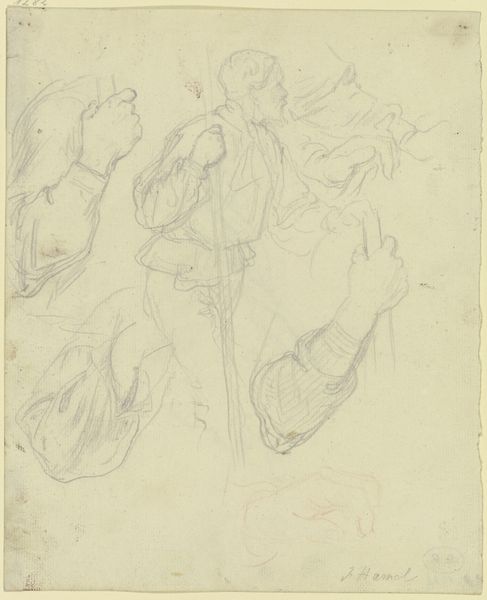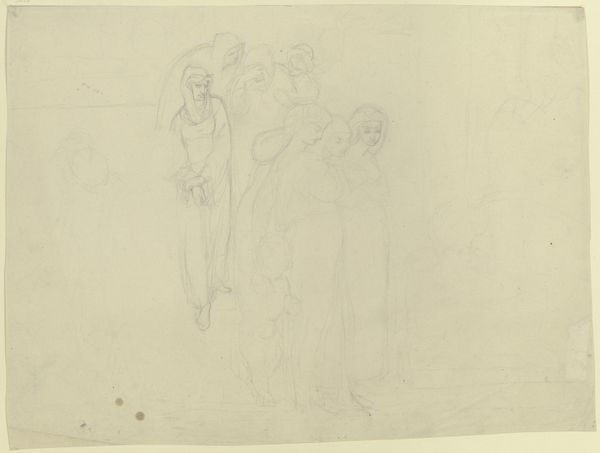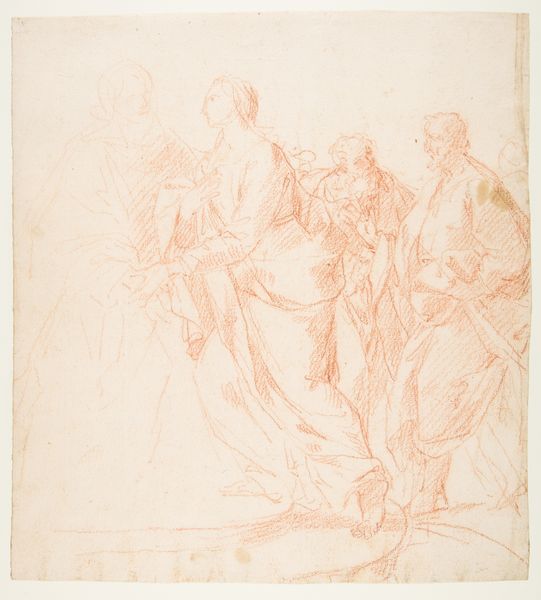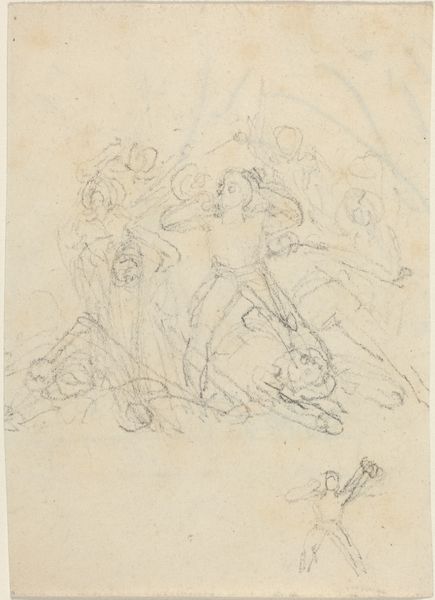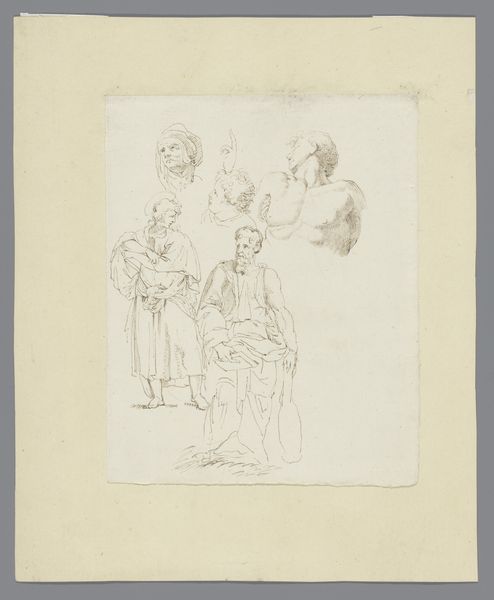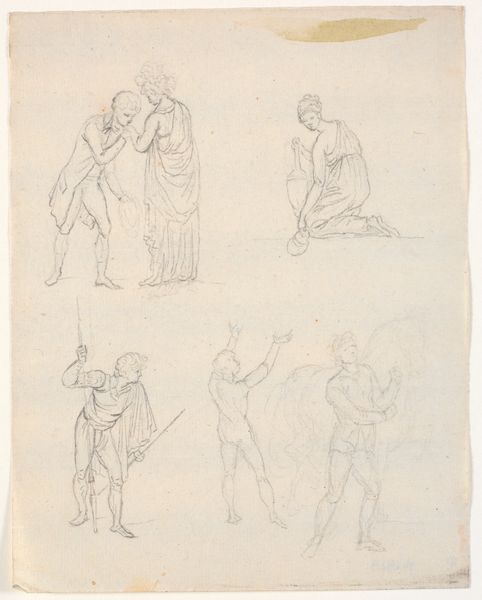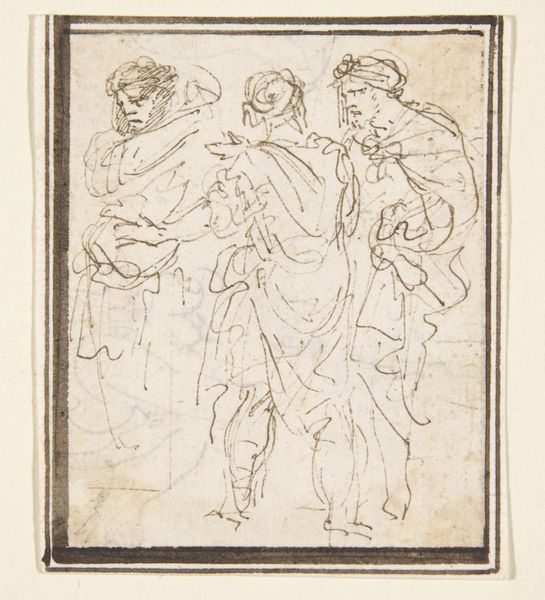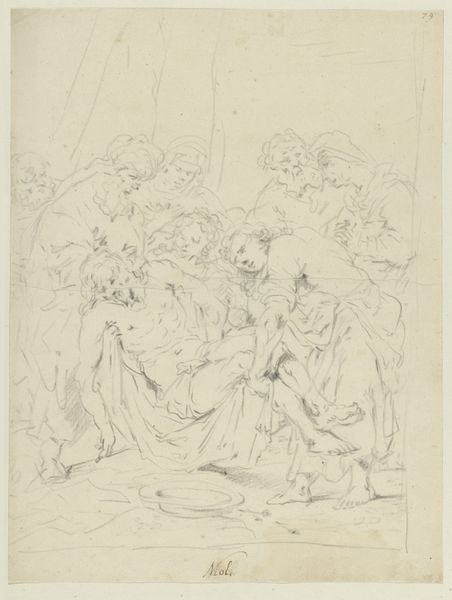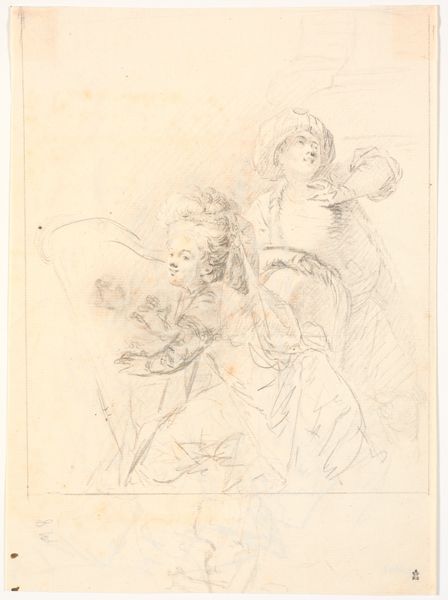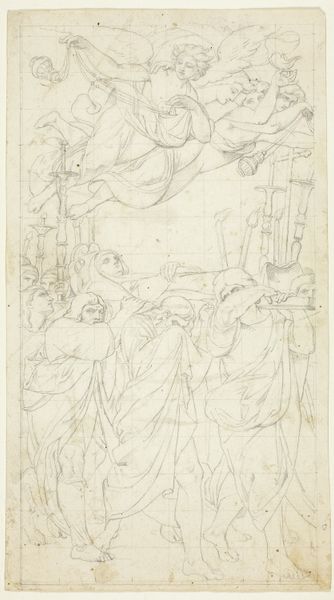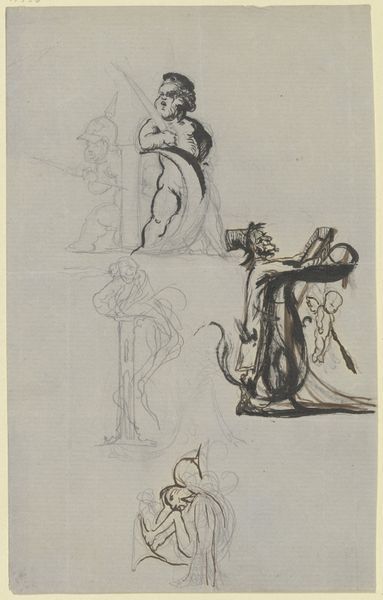
drawing, pencil
#
drawing
#
narrative-art
#
figuration
#
pencil
#
academic-art
Copyright: Public Domain
Editor: Here we have a pencil drawing entitled "Szene aus Goethes Iphigenie auf Tauris" by Bernhard Neher the Younger. The piece feels incredibly classical; I am intrigued by its unfinished quality. How do you interpret this work? Curator: Immediately, I'm drawn to the gestures. They feel almost ritualistic. The upraised hands, the flowing robes… do they remind you of anything familiar, perhaps from other classical depictions? Think of ancient Greek pottery or theatrical poses, the figures seem to hold cultural echoes within them. Editor: Now that you mention it, the raised hands and draping recall illustrations of Greek myths. Almost like an echo of past depictions, consciously evoked by the artist. Curator: Precisely. Consider the cultural memory embedded in these gestures. How might they trigger specific emotions or associations in the viewer, even subconsciously? The incompleteness also becomes symbolic, as the play it depicts, Goethe's *Iphigenie auf Tauris*, grapples with themes of memory, duty, and transformation. The sketch then is an emblem of what remains when all else has been stripped away: fundamental ideals and emotions. What strikes you most emotionally? Editor: The vulnerability. I see their exposed feet, which seems intentional amidst all of these classical references and idealized poses. The image as a whole reflects a kind of striving, like memory struggling to emerge. Curator: It’s as though the artist uses the sketch to access and communicate not just the scene but also the complex web of feeling associated with it across generations of engagement. It reminds us how symbols retain power. Editor: I see, it almost visualizes how imagery and themes evolve while retaining symbolic weight. Thanks for the insight!
Comments
No comments
Be the first to comment and join the conversation on the ultimate creative platform.
